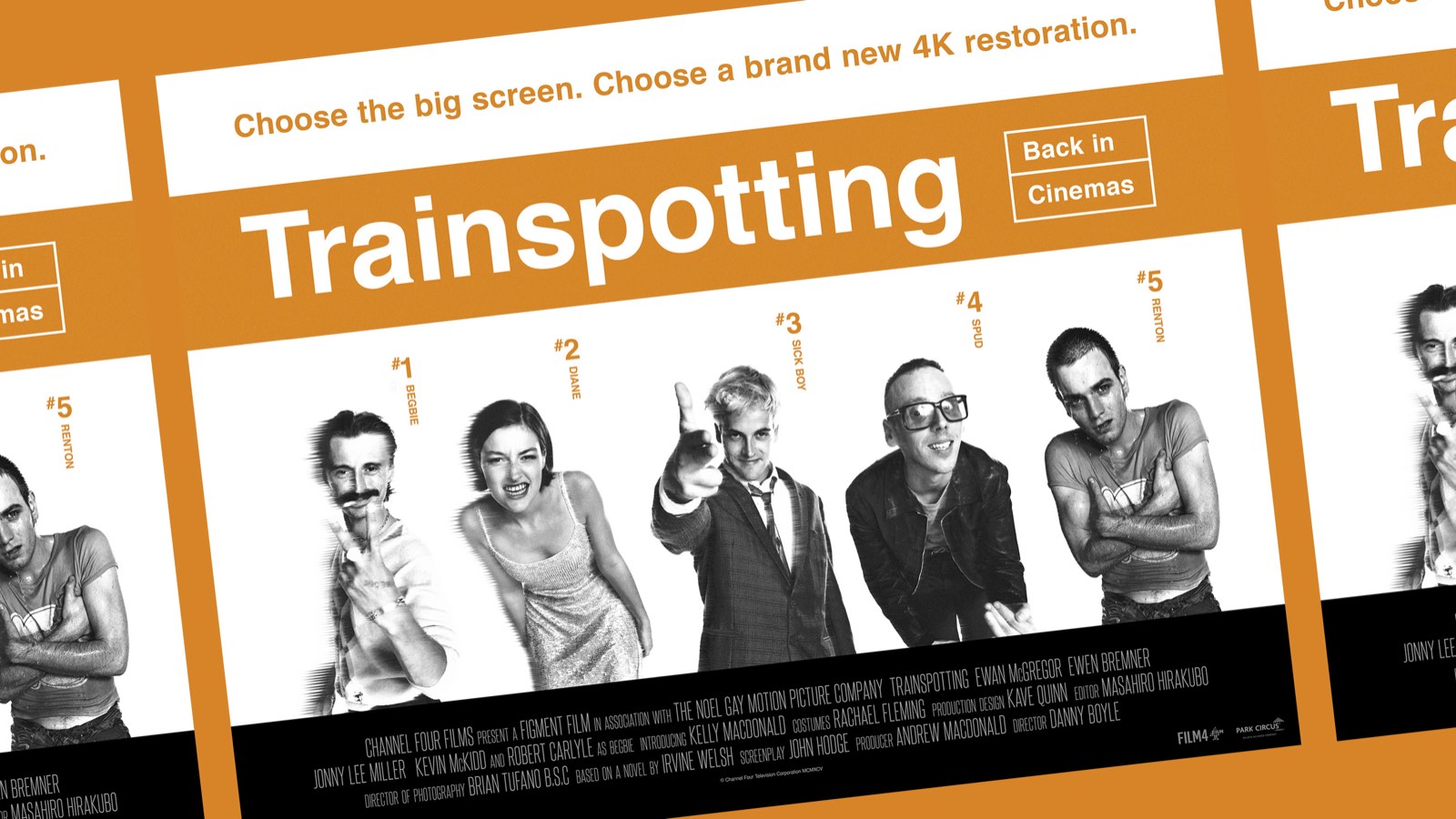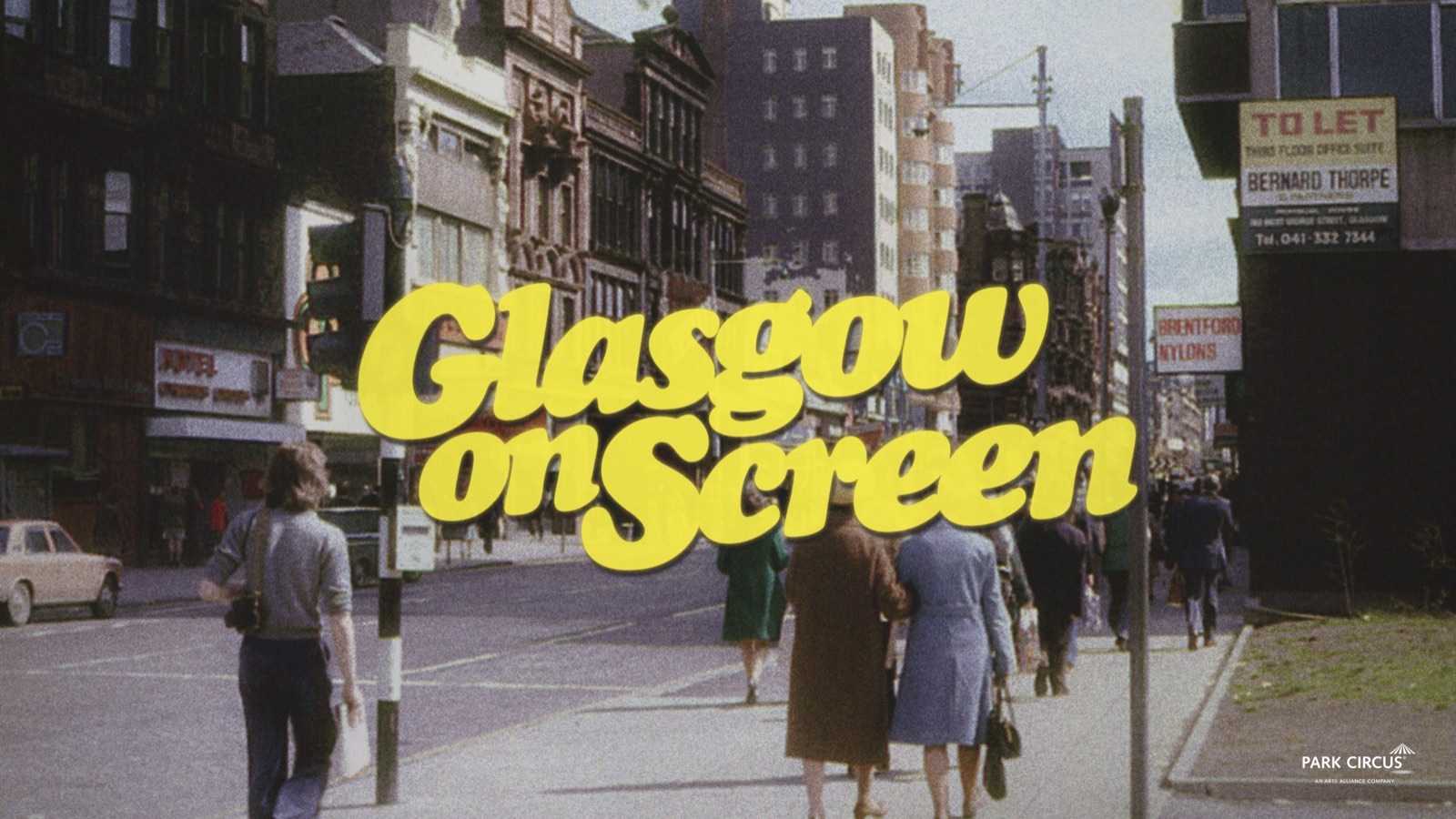
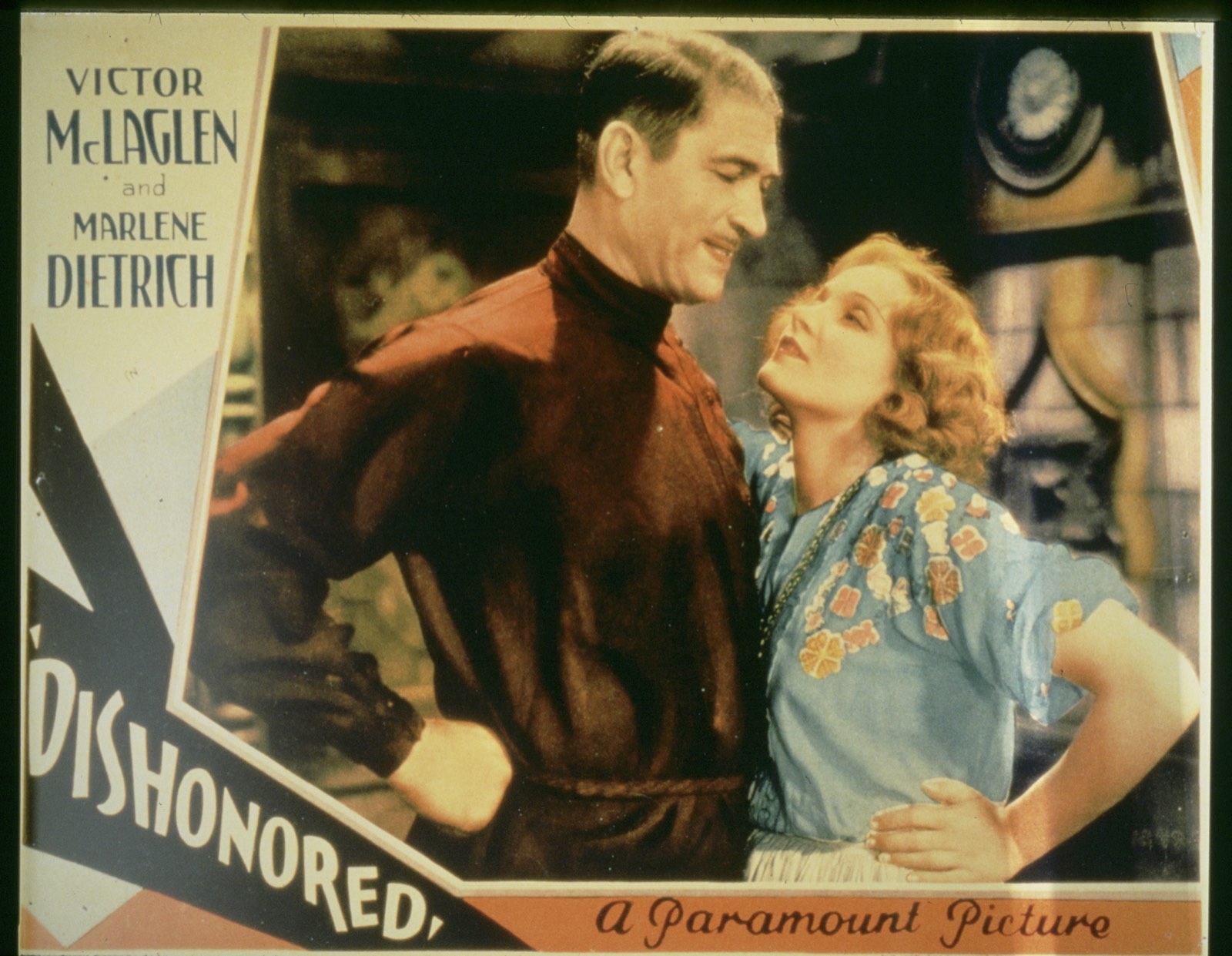
Celebrating its 90th anniversary this year is Dishonoured (1931), starring the legendary Marlene Dietrich. To mark the occasion, we asked the brilliant Professor Catherine Constable of Warwick University to tell us why the film, and Dietrich, are so special - the next in our Close Up series in which we take a deep dive into our catalogue to see what some iconic films, and stars, mean to us, and why.
Josef von Sternberg directed seven films that featured Marlene Dietrich and Dishonored is their third collaboration. Their first, The Blue Angel (1930), was made in Germany and its success transformed Dietrich from actress to star as well as attracting the attention of Paramount Studios.
Paramount were looking to set up their own rival to MGM’s popular European star, Greta Garbo, and gave contracts to both von Sternberg and Dietrich. Their first American film was Morocco (1930), which set a number of key features of Dietrich’s star persona. It gained instant notoriety by featuring a scene in which Amy Jolly (Dietrich) sings a musical number dressed in men’s clothing, white tie and tails, and kissing a woman in the audience. These hints at the star’s own bisexuality were to secure her place as a gay icon.
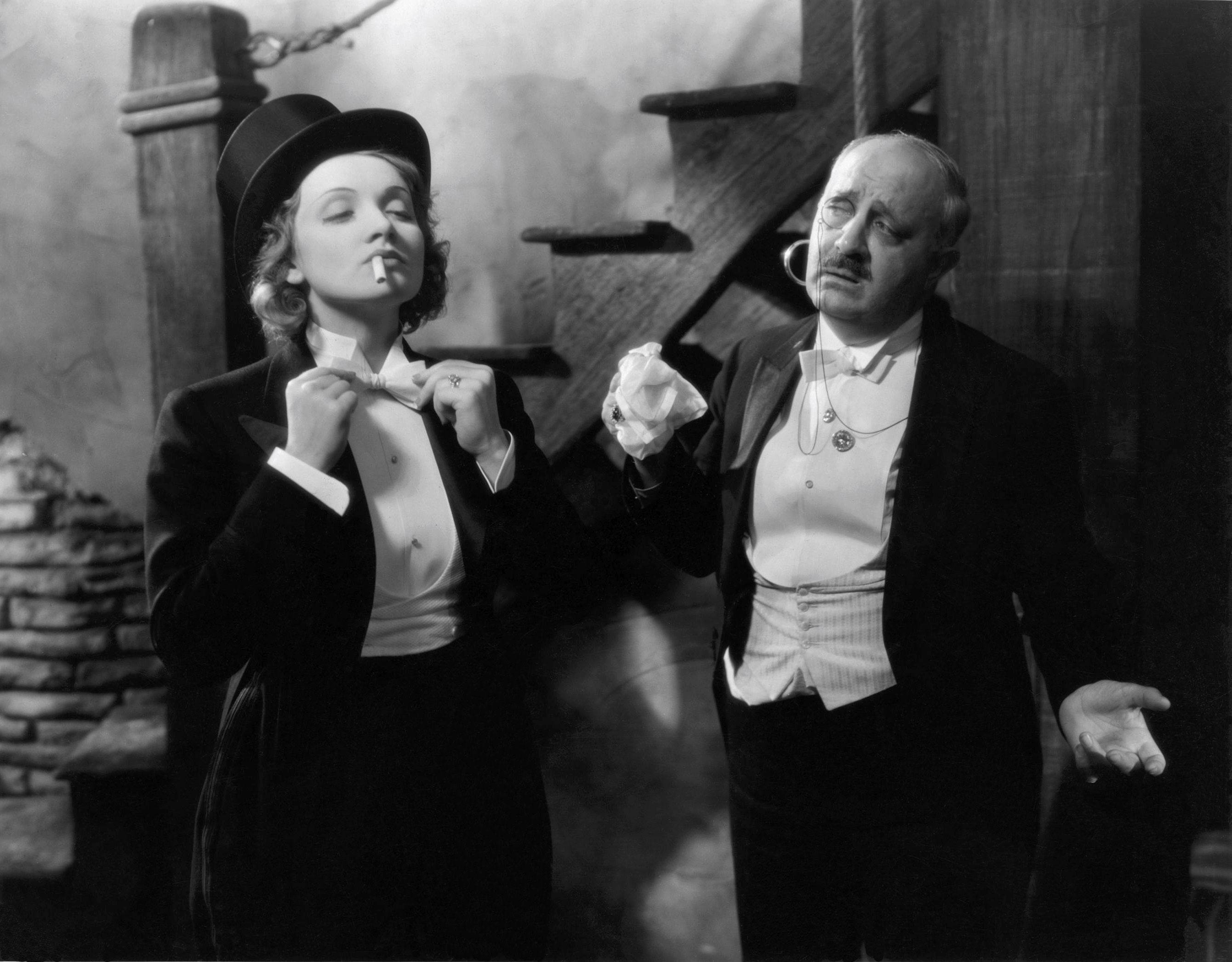
Morocco (1930)
Credit: Image courtesy of Universal Studios
Paramount and MGM marketed Dietrich and Garbo as examples of European exoticism – their foreignness making them desirable and enigmatic. They were icons of white feminine beauty and associated with a mysterious sexual eroticism that made them the opposite of ‘the girl next door’ type. Both stars had a beauty that was dependent on facial structure – high cheekbones that could be sculpted by top lighting. This gave their beauty an androgynous quality, exploited in the studios’ publicity shots in which their hair is swept back away from the face, or in scenes in which they appear in male attire or masculine tailoring.
Alexander Walker argues that the rivalry between the Paramount and MGM is evident from the placing of Dietrich and Garbo in similar roles. Both played spies in films that were released in the same year – Dietrich in Dishonored and Garbo in Mata Hari (George Fitzmaurice, 1931).
Each takes on the role of Catherine the Great – Garbo in Queen Christina (Rouben Mamoulian, 1933) and Dietrich in The Scarlet Empress (Josef von Sternberg, 1934).
The posters and publicity material for their spy films (below) show off the androgynous quality of both stars. Dietrich is scandalously dressed in male attire – swapping the black tie and tails of Morocco for an aviator suit that is positively contemporary in its styling, while Garbo’s enigmatic face conveys the mysteriousness of Mata Hari.

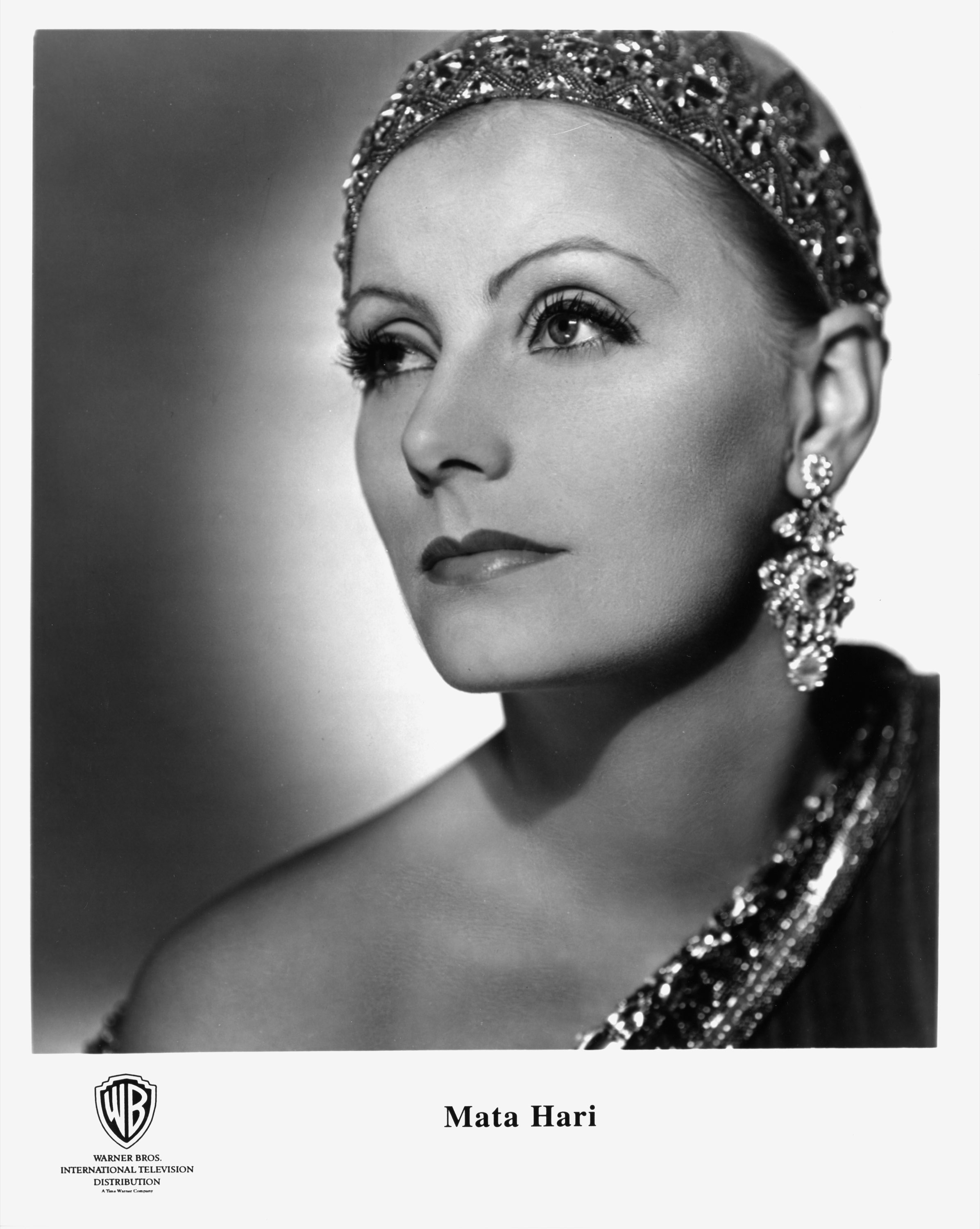
Greta Garbo in Mata Hari (1931)
Credit: Image courtesy of Warner Bros. Pictures
Dishonored has not really had the critical attention given to other films of the von Sternberg-Dietrich cycle. However, it offers much to enjoy – Travis Banton’s costumes play with textures and veils to construct the feminine allure of the mysterious Marie Kolverer/X-27 and Lee Garmes’ lighting sculpts Dietrich’s face creating the visuals central to the star’s iconography.
Like The Blue Angel, the film offers an interesting clash of acting styles. Victor McLaglen’s Col. Kranau draws on theatre and melodrama, while Dietrich’s stillness and minimalist gestures offer a more cinematic performance, which achieves real impact in the moments of heightened emotion at the end of the film. It is these aspects of star style that ensure Dietrich is always more than the hackneyed role of mysterious exotic woman she so often played and that make Dishonored well worth watching even today



